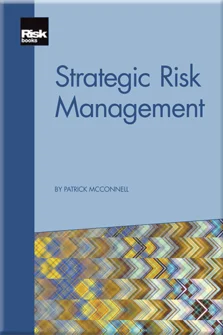Restructuring Strategies
Restructuring Strategies
Introduction
What is Strategy?
What is Strategic Risk?
Strategic Governance Risk
Different Strategies, Different Risks
Strategic Risk Assessment
Organic Growth Strategies
Acquisition Strategies
Productivity Strategies
Innovation Strategies
Restructuring Strategies
Evolution of Strategic Risks – A Case Study
Summary of Strategic Risks from Case Studies
Strategic Risk-Management Framework
Managing Strategic Positioning Risks
Managing Strategic Execution Risks
Summary
This chapter discusses the risks encountered in strategies that are attempting to restructure the assets of an organisation. At one extreme of such a restructuring strategy is that of General Electric, which in 2015 took the decision to divest itself of the vast bulk of its GE Capital Finance arm, a complex undertaking that would involve divesting itself of some US$350 billion of assets. The second case looks at the strategy of the board of Deutsche Bank to “divide” its assets into “core” and “non-core”, and to manage the non-core portfolio to wind down risks. A smaller but not insignificant restructuring of JPMorgan’s balance sheet led to what became known as the London Whale scandal, with a loss of some US$6 billion, as a result of faulty execution of the bank’s perfectly reasonable capital restructuring strategy.
RESTRUCTURING STRATEGY
Chapter 4 described four main types of strategy, which are used to actively position a firm within the context of a generic strategy (Porter 1980), one of which was a so-called restructuring strategy. Such a strategy aims to radically change the structure of a firm’s assets and its value proposition (Johnson and Scholes 2002), through:
Copyright Infopro Digital Limited. All rights reserved.
As outlined in our terms and conditions, https://www.infopro-digital.com/terms-and-conditions/subscriptions/ (point 2.4), printing is limited to a single copy.
If you would like to purchase additional rights please email info@risk.net
Copyright Infopro Digital Limited. All rights reserved.
You may share this content using our article tools. As outlined in our terms and conditions, https://www.infopro-digital.com/terms-and-conditions/subscriptions/ (clause 2.4), an Authorised User may only make one copy of the materials for their own personal use. You must also comply with the restrictions in clause 2.5.
If you would like to purchase additional rights please email info@risk.net











